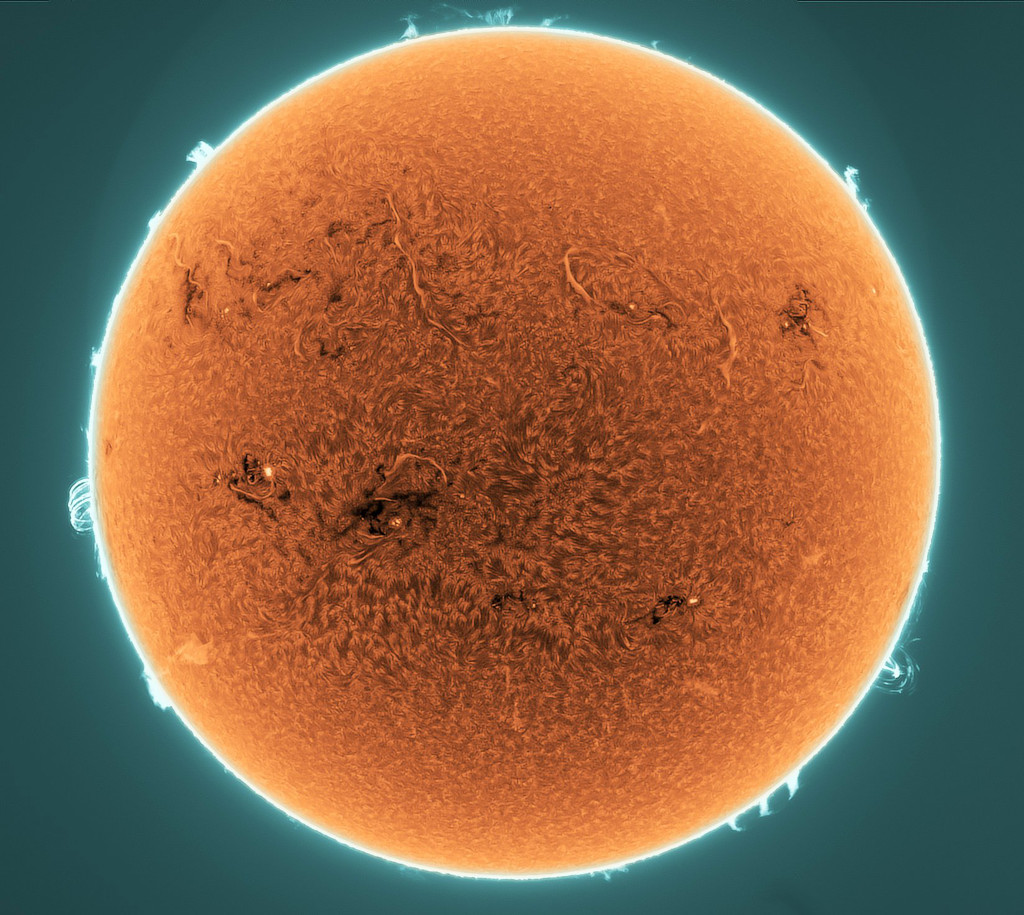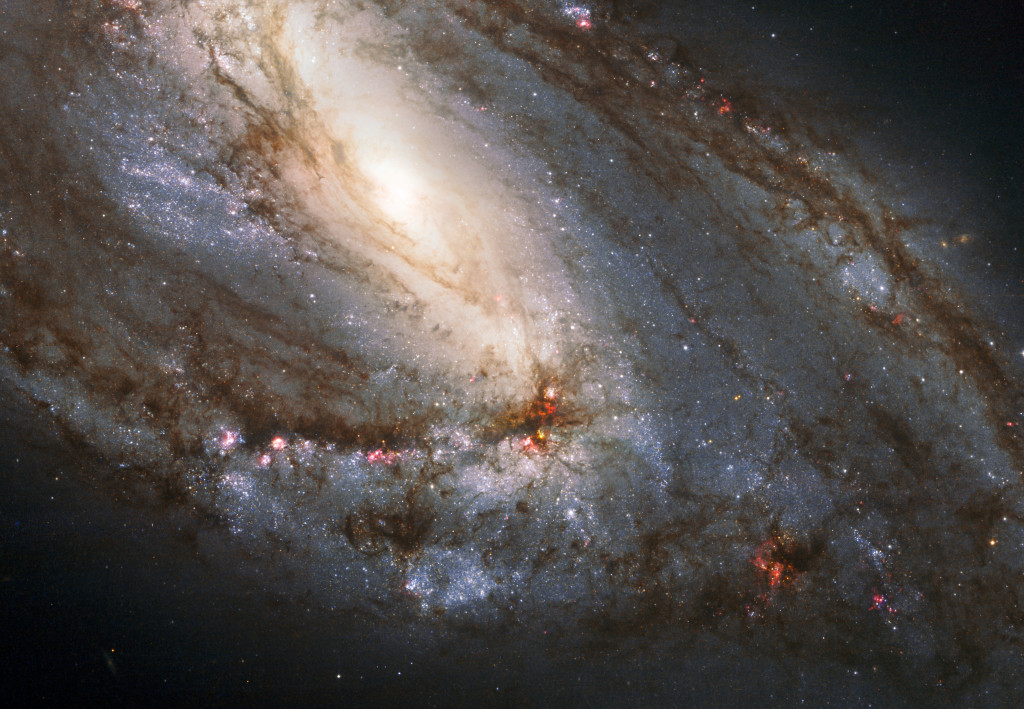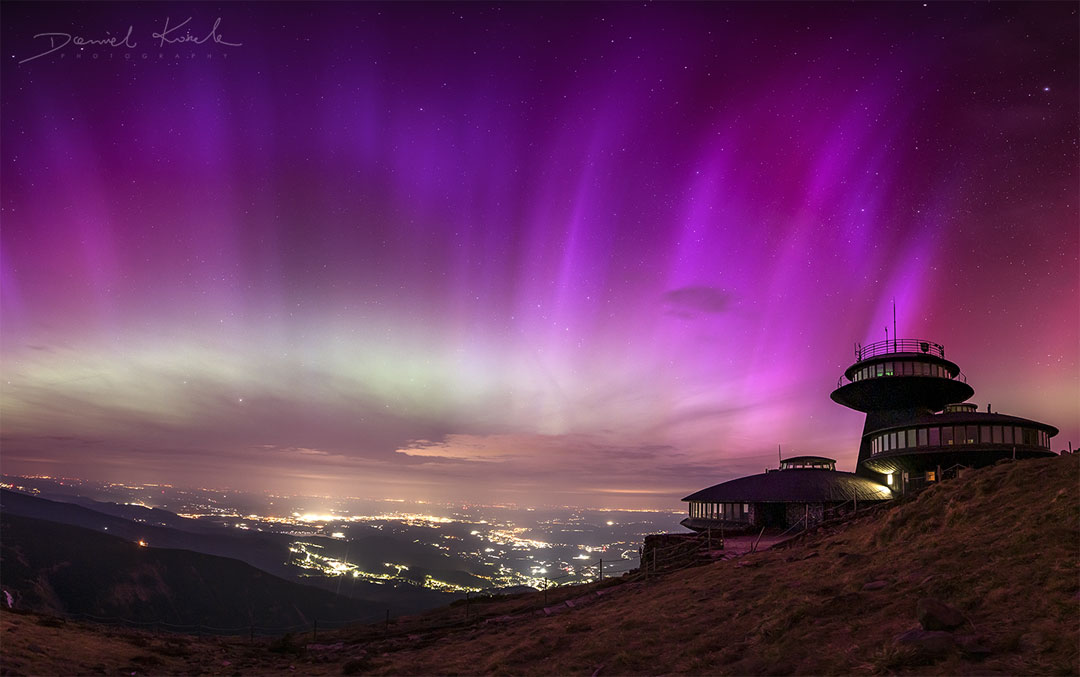Nombre total de pages vues
15/06/2024
SANTé/MEDECINE - Le CBD
ASTRONOMY - Prominences and Filaments on the Active Sun
2024 June 15
Image Credit & Copyright: Steen Søndergaard
Explanation: This colorized and sharpened image of the Sun is composed of frames recording emission from hydrogen atoms in the solar chromosphere on May 15. Approaching the maximum of solar cycle 25, a multitude of active regions and twisting, snake-like solar filaments are seen to sprawl across the surface of the active Sun. Suspend in the active regions' strong magnetic fields, the filaments of plasma lofted above the Sun's edge appear as bright solar prominences. The large prominences seen near 4 o'clock, and just before 9 o'clock around the solar limb are post flare loops from two powerful X-class solar flares that both occurred on that day. In fact, the 4 o'clock prominence is associated with the monster active region AR 3664 just rotating off the Sun's edge.
14/06/2024
SANTé/MEDECINE - L'immortalité pour bientôt - Tout se dégrade
ASTRONOMY - RCW 85
2024 June 14
Image Credit & Copyright: Martin Pugh
Explanation: From the 1960 astronomical catalog of Rodgers, Campbell and Whiteoak, emission region RCW 85 shines in southern night skies between bright stars Alpha and Beta Centauri. About 5,000 light years distant, the hazy interstellar cloud of glowing hydrogen gas and dust is faint. But detailed structures along well-defined rims within RCW 85 are traced in this cosmic skyscape composed of 28 hours of narrow and broadband exposures. Suggestive of dramatic shapes in other stellar nurseries where natal clouds of gas and dust are sculpted by energetic winds and radiation from newborn stars, the tantalizing nebula has been called the Devil's Tower. This telescopic frame would span around 100 light-years at the estimated distance of RCW 85.
13/06/2024
SANTé/MEDECINE - L'immortalité pour bientôt - Après tout nous sommes faits de cellules
ASTRONOMY - Messier 66 Close Up
2024 June 13
Image Credit: NASA, ESA, Hubble Heritage (STScI/AURA)-ESA/Hubble Collaboration.
Acknowledgement: Davide De Martin and Robert Gendler
Explanation: Big, beautiful spiral galaxy Messier 66 lies a mere 35 million light-years away. The gorgeous island universe is about 100 thousand light-years across, similar in size to the Milky Way. This Hubble Space Telescope close-up view spans a region about 30,000 light-years wide around the galactic core. It shows the galaxy's disk dramatically inclined to our line-of-sight. Surrounding its bright core, the likely home of a supermassive black hole, obscuring dust lanes and young, blue star clusters sweep along spiral arms dotted with the tell-tale glow of pinkish star forming regions. Messier 66, also known as NGC 3627, is the brightest of the three galaxies in the gravitationally interacting Leo Triplet.
12/06/2024
SANTé/MEDECINE - L'immortalité pour bientôt - La théorie de l'usure
ASTRONOMY - Aurora over Karkonosze Mountains
2024 June 12
Image Credit & Copyright: Daniel Koszela
Explanation: It was the first time ever. At least, the first time this photographer had ever seen aurora from his home mountains. And what a spectacular aurora it was. The Karkonosze Mountains in Poland are usually too far south to see any auroras. But on the amazing night of May 10 - 11, purple and green colors lit up much of the night sky, a surprising spectacle that also appeared over many mid-latitude locations around the Earth. The featured image is a composite of six vertical exposures taken during the auroral peak. The futuristic buildings on the right are part of a meteorological observatory located on the highest peak of the Karkonosze Mountains. The purple color is primarily due to Sun-triggered, high-energy electrons impacting nitrogen molecules in Earth's atmosphere. Our Sun is reaching its maximum surface activity over the next two years, and although many more auroras are predicted, most will occur over regions closer to the Earth's poles.
11/06/2024
SANTé/MEDECINE - Anti-inflammatoires naturels - L'eau de bouleau en cas de cystite
SANTé/MEDECINE - L'immortalité pour bientôt - Faire de la place aux nouvelles générations
ASTRONOMY - Orion and the Ocean of Storms
2025 December 13 Orion and the Ocean of Storms Image Credit: NASA , Artemis 1 Explanation: On December 5, 2022, a camera on board the u...

-
2022 September 26 All the Water on Planet Earth Illustration Credit: Jack Cook, Adam Nieman, Woods Hole Oceanographic Institution ; Data ...
-
2025 May 11 The Surface of Venus from Venera 14 Image Credit: Soviet Planetary Exploration Program , Venera 14 ; Processing & Copyri...









